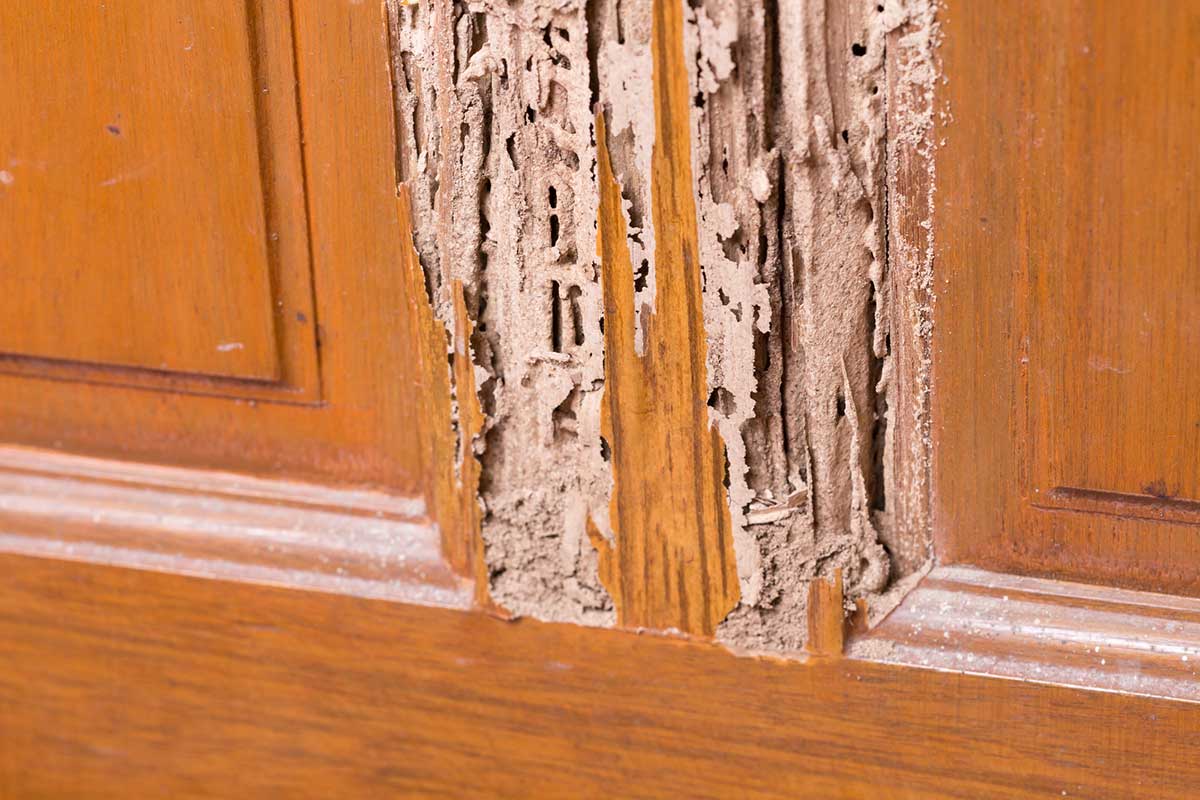
Originally Posted On: https://fastactionpestcontrol.com/termite-damage-this-is-what-they-can-do-to-your-house/
There are several different things termites can do to your home. Read on to learn more about termite damage.
When it comes to destructive pests, termites are by far one of the most notorious creatures in the insect family.
If you notice signs of termites, then it’s likely there is already some termite damage somewhere in or around your home.
Read on to learn what termites can do to a home so that you can be prepared before the damage is too severe.
Signs of a Termite InfestationOne of the biggest issues with termites is that they can live in your house for a long time before you actually know they are there. Some termite species burrow deep within wood beams or structures, while subterranean termites tend to live underground.
If you notice certain changes in your home, it’s possible that you already have some termite damage. Look closely near windows, doors, and other access points to see if you spot any termite wings.
When termites swarm out of their nest to find a mate, they twist their wings off when they land. If you see wings on a windowsill or a near doorway, it’s possible that they belong to termites, especially if there is a lot of them.
Another telltale sign is if you notice small mud tubes on the ground. Typically, these tubes will be located where the ground meets your house, a shed, or a tree since all of these are food sources for termites.
You should also look carefully for insect droppings since termites will create small holes where they kick the excrement out of the nest. These droppings will look like small mounds of wood pellets rather than a typical dropping from another living organism.
Of course, wood damage or other forms of damage are the biggest sign that you have a termite infestation. Let’s take a closer look at some of the damage these pests can do.
Termite Damage: A Costly ConsequenceIf you see signs of termite damage, it can be an extremely expensive endeavor to fix, depending on the severity of the damage to your home. So, what can termites do to a house? The answer is quite unnerving.
In some cases, you may notice that your drywall is discolored or that sections are drooping. This may be because the termites ate the structure behind the wall or that they actually started to eat pieces of the drywall itself.
A good way to look for signs of termite damage is to tap on floorboards, walls, and beams. If you hear a hollow sound, it’s likely that the termites have already been there. Hollow wood can be a serious and potentially dangerous structural issue.
Look closely at your floorboards and see if they show signs of buckling. Your floorboards might be extremely squeaky when you walk on them, almost out of the blue. These two signs indicate that the termites are likely in the foundation of the home.
Stuck windows or doors could also indicate a termite infestation. If the wood frame around doors and windows has been eaten, it will cause them to become stuck and unable to be opened.
Check tile flooring to make sure that it’s securely in place. Loose tile could be a sign of termites due to the moisture that they can add to your floor, which may cause tiles to loosen over time.
Finally, any signs of crumbling or damaged wood that looks like rot could potentially be from termites. Look for maze-like patterns in your walls, floorboards, and furniture, too.
What You Can DoTermites are not known to cause or spread any diseases in humans. However, if termites are nesting in your home, it can cause respiratory issues or make allergies and asthma worse due to waste and wood particles that you’re breathing in.
It’s virtually impossible for the average homeowner to remove termites on their own. However, you can take some preventative measures to keep them from attacking your house in the first place.
Make sure you keep firewood and other loose pieces of wood far away from your home. Check your gutters and make sure that rainwater and moisture are properly moving away from your home’s foundation. Excess moisture is a common attractant for termite colonies.
Even if you take precautionary measures, it’s not always a guarantee that you won’t have a termite problem. If you see any signs that there could be termites present, it’s time to call the professionals.
A professional exterminator and pest control company will do a thorough inspection of your home to determine where the termites are, and how much damage has already been done. They will track the pests at the source, and create a protective barrier to prevent more pests from getting in.
In some cases, termites may have already used your home temporarily and moved on. It’s important to follow up with proper pest control measures to prevent them from returning to make your home their home in the future.
Say Bye-Bye to TermitesFrom rotting wood to loose floorboards and tile, there are plenty of things that termites can do to wreak havoc on your home. Once you know the signs of termite damage, you can take the right steps to get the issue fixed so that your home and sanity are protected.
Don’t wait if you think that you might have a termite problem. Contact the experts at Fast Action Pest Control today to schedule your consultation so you can have peace of mind.
